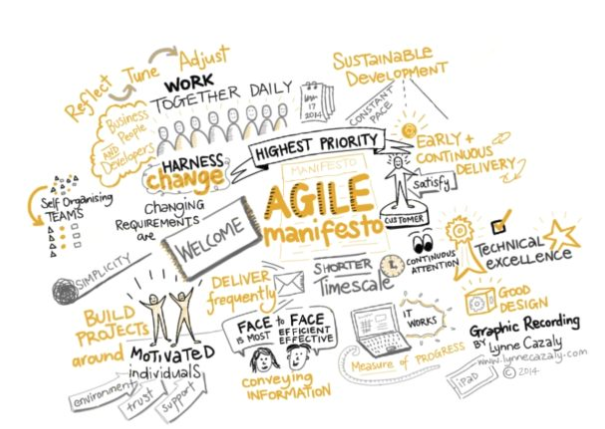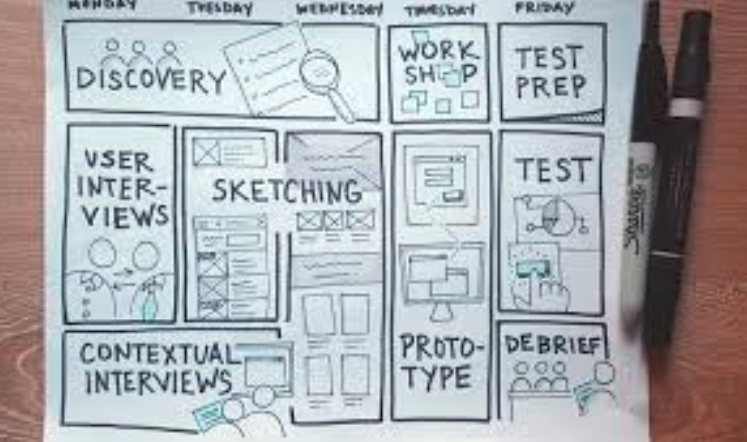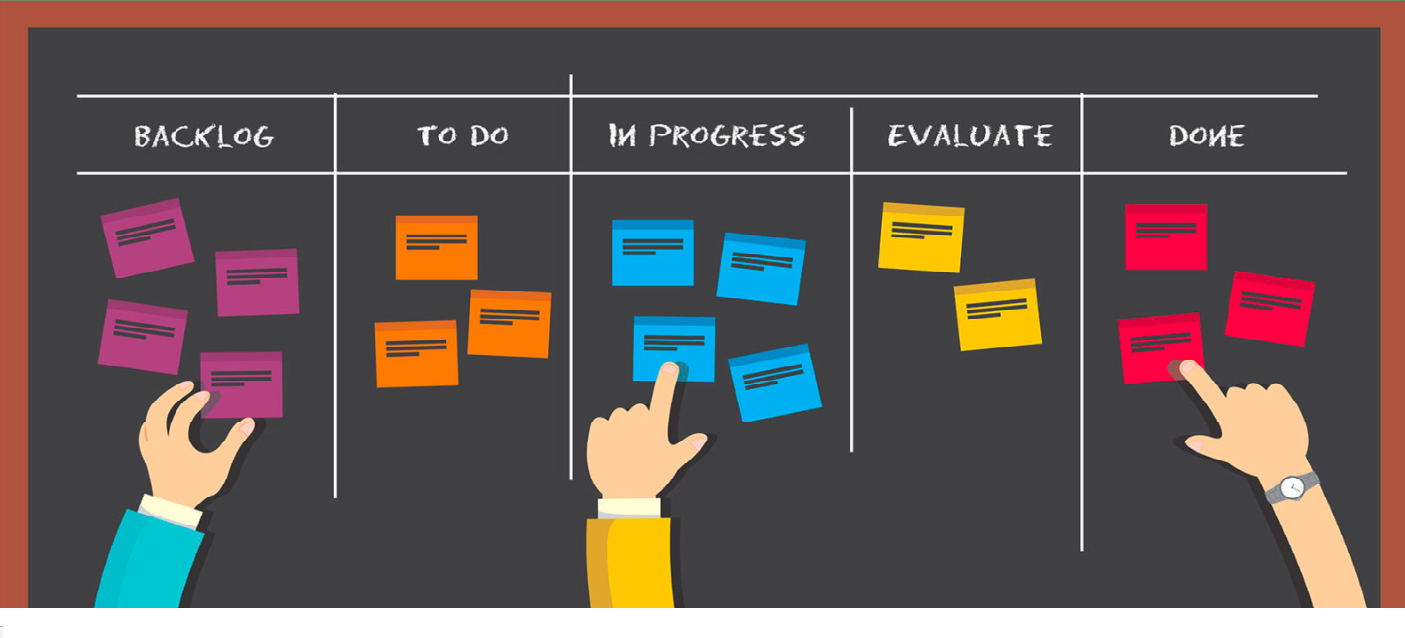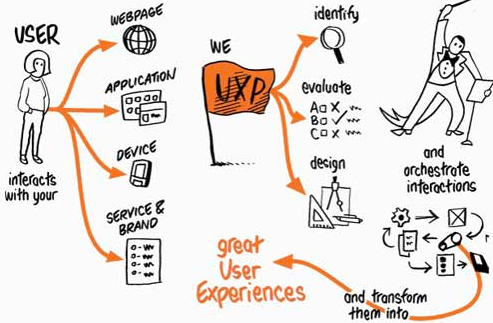Agile and UX: How do they measure against each other!!

Agile is an umbrella approach encompassing variety of IT product development and business methodologies that has at its core deep, unwavering commitment to principles of highly collaborative, multi-functional, self-organizing teams. Agile isn’t limited to software or IT systems, but goes beyond that. Agile’s minimal approach and focus upon working product or software as a measure of progress is in stark contrast with heavy lifting ways and upfront documentation before each stage of waterfall development.
Waterfall is called so because of the sequential, orderly tasks and downward flowing approach, where everything is supposed to be smooth, and one thing leads to the other. In real life, its rarely so.
Agile methods, of which Scrum is the most popular, bring in to calling flexibility, speed, and willingness to get things done. Many experts believe that Since agile was introduced in the development of software applications, both the overall quality and speed of delivery have significantly improved. It’s the quick gratification virtues of the Agile methods that have made the methods dear to many professionals in various industries.
However, Agile methodologies are focused primarily on developers and the iterative nature. The concept of Agile grew out of programmers’ attempts to resolve most common project management issues and pain points experienced during big software development projects. Unsurprisingly then, the Agile Manifesto (primary document delineating Agile principles) did not include the UX perspective, nor did it account for the time, resources, and research that UX professionals need in order to create trend-defining, excellent designs. For the much part, UX was taken to be part of development, as Design effort.
Customer Centricity, cannot and must not be equated with customer collaboration. Most people make this basic error, partly due to the fact that both terms contain the word customer, and partly due to the belief that involving customers in the development process takes care of all their needs and makes them delighted customers. The truth of the matter is that Customer Centricity is a far wider term which requires placing customers’ requirements at the center of all activities; while collaboration is just a tool available to implement the vision of Customer Centricity.

Image Source: SAP
Agile and UX: curving away from each other!
Agile is a mindset or approach about radical transparency and knowledge of the fact that the development team doesn’t know all the answers, or even most of the answers, at the beginning of a project.
An UX workflow outlines all the steps within the UX process, from UX research and gathering user feedback or behavior driven insights to defining design specifications, to low-fidelity wireframing and high-fidelity prototyping, UI / UX design, and performing customer or end-user usability testing prior to development.

Image Source: DIlbert
There is a tendency within Agile project teams to get ahead of the curve. At times, the developers run ahead of where overall team and the customer are in terms of discussion / elaborations / prototyping on requirements and how the final product will look and feel and subsequent sign offs. Perhaps the development team knows exactly what they’re making functionally, hence they feel comfortable, at times even overconfident, especially when re-writing a product that is already live (new technologies rather than a refactor). The customer may perhaps be expecting fine grained behaviors and focus on aesthetics, look and feel part, while unbeknownst to customers/ end users, the developers are trying to concurrently work on future functionalities of the system in order to get done as much as quickly as possible. Often this happens with the implicit knowledge of everyone on development team, with Business Analysts (and the Scrum master or PM) feeding back-end developers concise & defect-free stories to code. Developers hope to stay ahead of the curve in this manner, often working in a factory-manner, producing lines of code hoping that the customers’ expectations remain the same. And while by doing this, development teams may succeed, especially if the measure of customers’ success is through produced lines of code, where they often fail is meeting the more human expectations.
In fact, in projects where the Design teams are involved, the rigid way in which Agile is often implemented in medium to large organizations and / or projects (typically, projects driven using Scrum or similar methods) makes things even more challenging. Two-week iterations force tunnel vision on the design team, who are often tasked with making backlog items ready for development often at the cost of due thought process. The team runs risk of getting so focused by a particular feature or the user story that they may ignore the broader, often intangible product and design implications, such as integration, omnichannel consistency, or user-interface architecture.
Needless to say, such development efforts often go against the grain of Agile itself, as one of the core cornerstones of Agile development is feedback from customer and collaboration, which can be often sacrificed in the name of delivering incremental pieces of software, or iterations.

Image Source: Internet
Agile and UX: integrating towards and in to each other!
However, this sad state is not unmanageable. Over the years, many UX professionals who work in an Agile environment have developed their own ways of not only surviving, but thriving in this mad-paced, Agile environment. Once again, there is no set protocol or playbook here — most of the remedies that UX professionals employ are broad-based, strategic, and organizational factors in the fervent hope of marrying UX with Agile, keeping intact the benefits of both while coming together to make a better product.

Image Source: Adobe Stock
- Management buy-in and understanding the value of UX -: Organizations which are further along on UX curve inherently understand the value UX-focus brings especially to product development process. Focus on UX not only provides a competitive edge, but also is a key differentiator in the Go-to-Market strategy. This is yet another way of describing UX maturity, a concept long argued as the key to product success, and consequently, business success. Decision makers in such organizations realize that UX is not just an afterthought, or an extra coat of paint; rather it’s the careful and customer or end user-centered approach to product strategy, features, structure, interactions, content, and aesthetics. Project managers in these organizations and leadership don’t just ask UX designers to rush through features and user workflows, or merely rubber-stamp features that have already been decided upon by the rest of the team, instead, they expect the UX team to be involved from the very start and pay attention to nuances and subtleties in order to produce something which customers and / or end-users will cherish. Managers and leadership in such organizations embraces uncertainty and detaches its focus from merely quantitative measurement and understands that a “UX” approach means always hypothesizing, testing, and iterating on product design ideas. The focus is on qualitative methods to gather behavior-driven insights. The rich insights that UX teams need for their work and to make decisions often require time consuming and “putting-your-ear-to-the-ground” methods. On the other hand, organizations that are biased toward quantitative data as being the most important or most persuasive evidence for decision making often integrate Agile and UX poorly.
- UX People are critical Leaders -: While having managers and stakeholders that understand and support UX is extremely important, the reverse is also true: UX people that succeed in Agile environments exhibit leadership qualities. They point out assumptions about user behavior that could prove disastrous if wrong. They make time to reach out to colleagues to help explain UX process and principles, and why they produce better products. They bring their coworkers to usability tests to build empathy and observe users struggling. They fight for getting time to do user research, and to design something right. UX pros that thrive in Agile push the team back towards the bigger picture, and the context in which humans will actually use these products that are being built.
- Agile Process is natural fit for UX -: The original idea of Agile was to act as a flexible framework which can be used as a guidance, or a set of guiding principles to aid teams to develop quickly and effectively, where customers and end-users are as much a part of the process as developers are, where change and reacting to change is welcomed, and where speed and agility trumps the need to follow set protocols. By integrating Agile and UX, all of these principles are promoted. Customers’ or end-users’ feedback invokes behavior driven insights which are crucial to UX work, while readiness for change drives developers changing their approach in the face of radical decisions by the UX team.
- Agile development doesn’t limit user experience -: Users don’t interact only with small parts of a product’s design in isolation, they use many or all features of the product to accomplish larger goals. What good is one piece which works fabulously well, and is well thought out, while the overall application is a poor implementation? All pieces of a product design must work together seamlessly and harmoniously to provide a “beyond-good” user experience. In fact, in an omnichannel world, users expect their journeys to transition and perform seamlessly across multiple channels, even when developed by different teams.
- Rigidity drives away innovation-: UX works well when the Agile process isn’t strictly and mindlessly implemented. If an organization has rigid Agile-process guidelines that admonish UX teams for following due dilligence, and rewards UX professionals who merely rubber-stamp designs, it becomes very tough for UX people to become anything more than pixel-pushers. UX professionals who succeed in Agile work in environments that care more about responding gracefully to change than about how long a standup meeting can last. Once again, nuances and rules of Agile should be implemented in the spirit of producing a better product. Teams who incorporate UX well will figure out how to manage features and user stories so that UX has some time to get ahead of production and create validated, researched, and thoughtful designs.
- Learn when to accept UX debt-: UX teams, when working within an agile approach or workflow, need to compromise on the ideal or the best solution to get something built quickly, especially if that something delivers some, if not the most, value. UX can’t be an impregnable fortress in the sea of Agile. Iterations in agile are planned to create a steady development velocity and UX design must keep up with this pace. Setting time limits for each of the team’s UX activities will help ensure that the team’s goals are realized on time, ideas are not overworked and the bad ones are thrown away early. UX teams must learn to limit the fidelity of design that is handed off to developers. This starts with the wireframing and prototyping phase of the UX design process. As an important lesson – UX teams must not waste time on details that could be worked out further down the line. It is essential to produce not the perfect design, but just the workable design, so that the same is communicated quickly and effectively to the developers.
- UX Professionals and Developers are on the same side-: Effective Agile teams communicate well and share a common understanding of the project’s goals (both large and small). Developers and UX professionals act in spirit of producing a truly better product. UX professionals step beyond pixel-pushing and decoration only, while developers are ready to make radical changes, often at the cost of abandoning their tested approaches and coming out of their comfort zones. UX professionals feel equally invested in the success of the product and take ownership for development issues. Often, such an ideal state of affairs is only achieved after working together and developing respect for each other’s work, something which is simply not possible in short runs.
- Its simply better ROI -: While many non-UX-minded project teams see UX as time consuming, UX-minded teams see the extra time used upfront as a factor which produces returns several orders of magnitude over the initial investment.
Collaboration is key for Agile-UX teams to deliver great software. If design and development teams do not keep an open-door policy, misunderstandings will grow and issues won’t be identified until it’s too late. Teams used to work a certain way, for example designers working head down for long stretches of time, while developers cranking away lines of code often have to make comprises on quality or risk producing worthless code.

Image Source: Methodsandtools
Conclusion
It’s certainly difficult to make Agile and UX work together as two wheels of the same cart where one wheel is simply not enough to pull forward even an empty cart. Typical Agile processes tend to be biased against anything which is not measurable, and don’t take into account the time, resources, and efforts UX professionals need in order to deliver behavior driven attributes and user-centered products. Aside from its success in IT applications and software development, the agile processes are becoming popular in legal, marketing and other enterprise industries. At the same time, many are realizing the important and critical need to integrate iterative workflow into the user experience process. And despite issues, Agile UX teams agree that Agile and UX both help make a better product and deliver a better user experience.